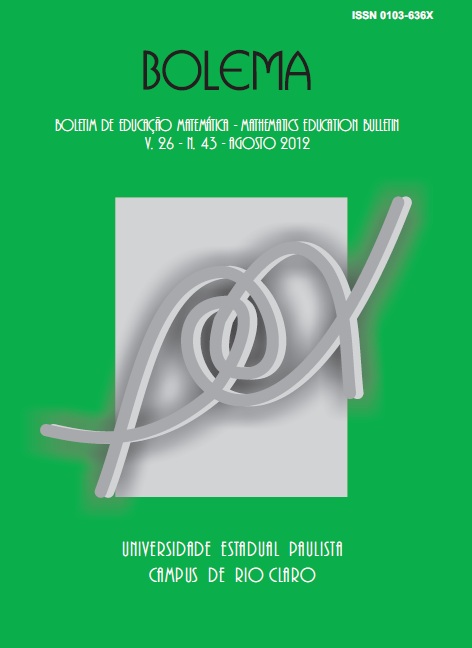<b>Os “Mundos da Matemática” em Atividades de Modelagem Matemática</b>
Resumo
Resumo As argumentações pautadas nos interesses e objetivos de alunos e professores durante o desenvolvimento de atividades de Modelagem Matemática foram sistematizadas em Kaiser e Sriraman (2006) por meio de perspectivas para a Modelagem Matemática na Educação Matemática. Considerando o propósito do nosso trabalho de investigar a Modelagem Matemática como prática favorável ao desenvolvimento do pensamento matemático de alunos, pautamos nossas discussões na perspectiva cognitivista para a Modelagem Matemática. Para abordar o pensamento matemático utilizamos os pressupostos teóricos de Dreyfus (2002) sobre o pensamento matemático de estudantes, e as caracterizações de Tall (2004) para diferentes “Mundos da Matemática”. As análises empreendidas se realizam a partir do desenvolvimento de atividades de modelagem por estudantes de um curso de Licenciatura em Matemática e expressam reflexões e considerações sobre o pensamento matemático dos alunos e os processos cognitivos que mobilizaram e apontam indícios do trânsito dos alunos pelos Três Mundos da Matemática durante o desenvolvimento destas atividades. Os resultados obtidos a partir dessa análise indicam o potencial de atividades de Modelagem Matemática como desencadeadoras de processos de pensamento matemático caracterizados por Dreyfus (2002) e Tall (2004). Palavras-Chave: Educação Matemática. Modelagem Matemática. Pensamento Matemático. Três Mundos da Matemática. Abstract The arguments and objectives guided by the interests of students and teachers during the development of mathematical modelling activities were systematized by Kaiser and Sriraman (2006) as perspectives on Mathematical Modelling in Mathematics Education. Considering the purpose of our article of investigating Mathematical Modelling as practice that can lead to the development of students’ mathematical thought, we based our discussions on Cognitive modeling. To approach mathematical thought, we used Dreyfus’ theoretical presuppositions (2002) about students’ mathematical thought and the characterizations of Tall (2004) for different “Worlds of Mathematics.” Analyses are carried out of the development of modeling activities by students in a university-level mathematics teaching program and express thoughts and considerations regarding the students’ mathematical thinking and cognitive processes. There was evidence that students move among the Three Worlds of Mathematics during the development of these activities. The results point to the potential of Mathematical Modelling activities for the development of processes of mathematical thought characterized by Dreyfus (2002) and Tall (2004). Keywords: Mathematics Education. Mathematical Modelling. Mathematical Thinking. Three Worlds of Mathematics.Downloads
Publicado
2013-01-28
Edição
Seção
ARTIGOS
Licença

>>>>> BOLEMA: Mathematics Education Bulletin = BOLEMA: Boletim de Educação Matemática, Rio Claro, SP, Brasil - eISSN 1980-4415 - está licenciado sob Licença Creative Commons


